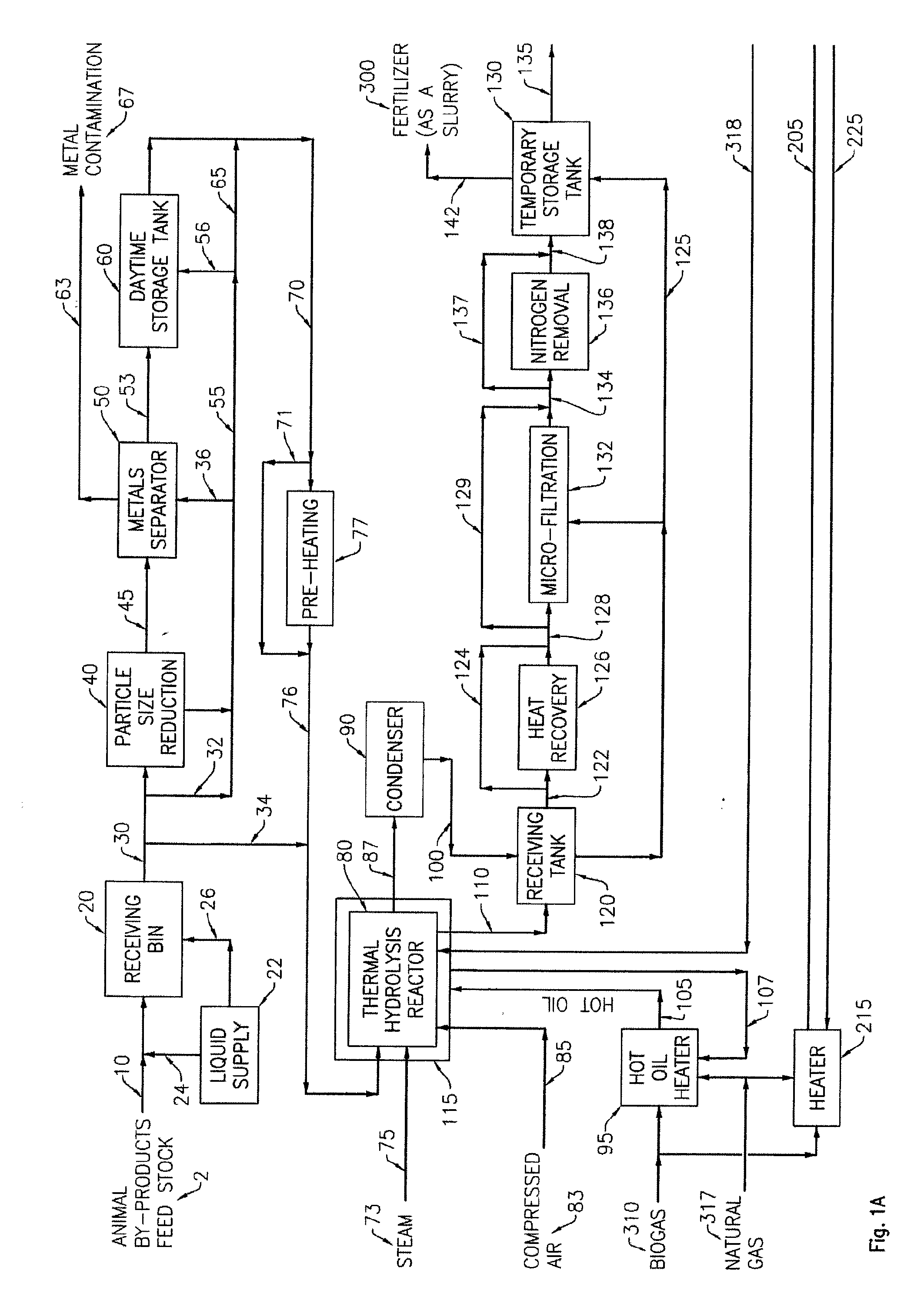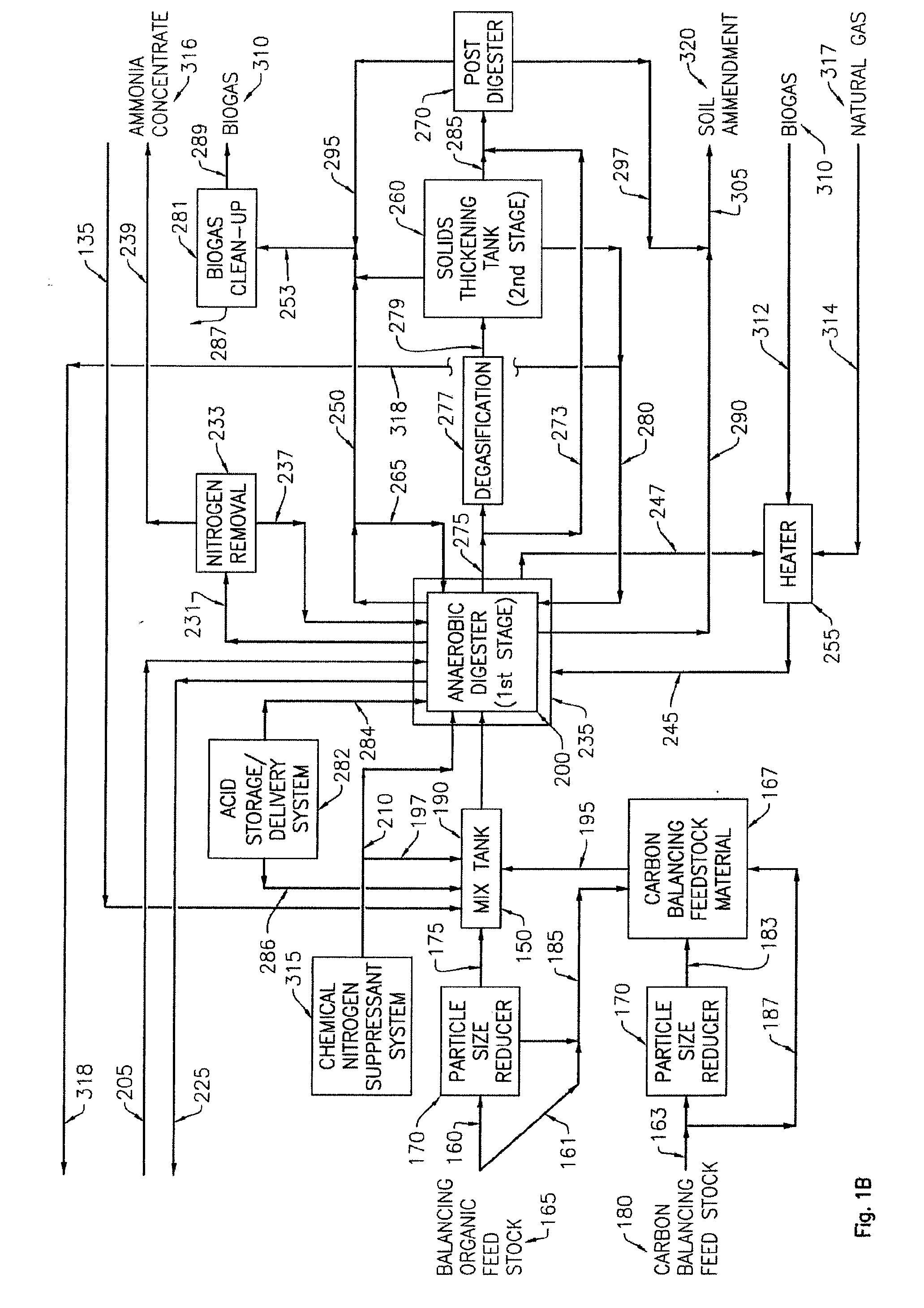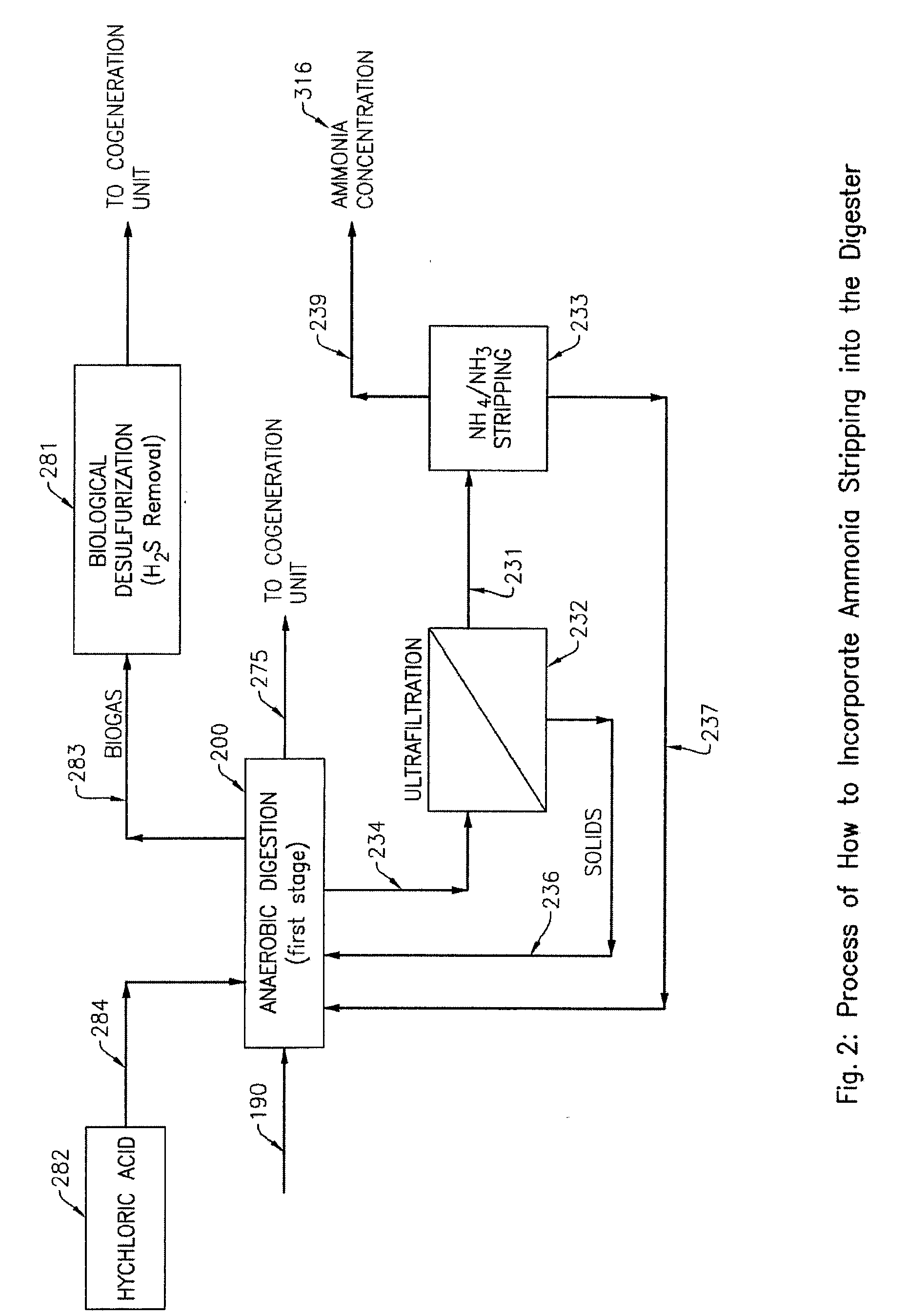Apparatus and Process for Production of Biogas
a biogas and apparatus technology, applied in the field of apparatus and a process for the production of biogas, can solve the problems of not being configured to maximize the manufacture of biogas using anaerobic digestion, treating the liquid fraction produced after thermal hydrolysis, etc., to reduce solids accumulation, reduce the time of digesting retention, and reduce the effect of solids accumulation
- Summary
- Abstract
- Description
- Claims
- Application Information
AI Technical Summary
Benefits of technology
Problems solved by technology
Method used
Image
Examples
Embodiment Construction
[0054]The present invention relates to an apparatus and a process for the production of biogas from biodegradable organic waste.
[0055]The following description is of a preferred embodiment.
[0056]A process and apparatus for converting organic waste, for example organic waste comprising animal by-products, into biogas using high temperature, high pressure thermal hydrolysis with anaerobic digestion is provided.
[0057]Biogas is typically characterized as having a methane content from between 55 to 80% by volume. The remaining balance is CO2 with trace amounts (2S, N2, H2 and ammonia. The methane content of the biogas as produced according to the methods described herein may reside in the upper percentile depending upon the feedstock employed. For example the methane content of biogas produced as described here may range from about 60 to about 80% by volume, or any amount therebetween, for example 60, 62, 64, 66, 68, 70, 72, 74, 76, 78, 80%, by volume or any amount therebetween, when ani...
PUM
 Login to View More
Login to View More Abstract
Description
Claims
Application Information
 Login to View More
Login to View More - R&D
- Intellectual Property
- Life Sciences
- Materials
- Tech Scout
- Unparalleled Data Quality
- Higher Quality Content
- 60% Fewer Hallucinations
Browse by: Latest US Patents, China's latest patents, Technical Efficacy Thesaurus, Application Domain, Technology Topic, Popular Technical Reports.
© 2025 PatSnap. All rights reserved.Legal|Privacy policy|Modern Slavery Act Transparency Statement|Sitemap|About US| Contact US: help@patsnap.com



